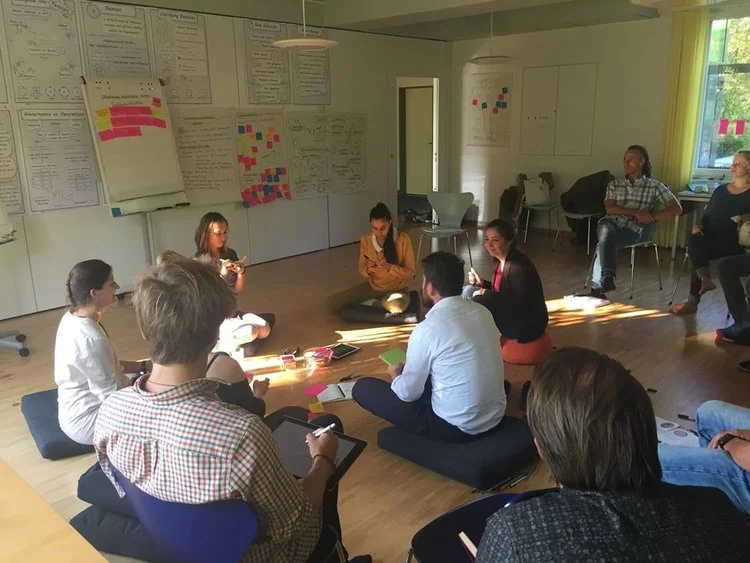How to take effective decisions
Taking a decision is a difficult thing to do by oneself, taking it together in a group can seem impossible. Creating an alchemy of all perspectives into a common agreement is a mastery and ensuring that the individuals then stick to the agreement is wizardry. Yet, collective decision making it is at the heart of a fruitful collaboration and we are confronted by it on a day by day basis. So how do we deal with this challenge?
At collaboratio helvetica we use Sociocracy 3.0 (S3) to guide our governance processes and organisational structures. Our team went to a training of S3 where we learned the pattern of effective decision making. Practicing the pattern in the training I was amazed on how quickly we came to agreements on difficult topics that were relevant and important to us in the situation. It was fascinating to see how a guided process everyone follows can allow for all perspectives to be voiced without ending up in a 2 hour long discussion without clear outcome. The decision making process seemed simple enough to me and I thought it would be evident to use even if we have some team members who haven’t been trained in this method.
Reality kicked in and proved me differently. It is one thing to conceptually understand how the process works and another thing to apply it in everyday working life. And even following a process guided by a skilled facilitator, such as we did in the training is a long way from facilitating it oneself with a mixed set of team members who have a different level of understanding of the process. So my takeaways from this learning journey are the following:
Practicing S3 decision making.
Be aware of when the decision making process makes sense to apply and when not. When you decide to apply it, follow through with it step by step, instead of creating morphed short cuts. This is super important to get a sound understanding and habit of using the process correctly.
When a decision needs to be taken immediately, define who is the facilitator of the decision making process. A person who clearly holds the process and time-boxes is essential to reach an agreement.
In case of team members who aren’t experienced in this process, I think it can also be advisable to quickly explain the steps on a meta-level before applying them. This creates a safe space for everybody, as everyone knows what is going to happen and when they can bring in their concerns and objections.
When you’ve reached an agreement make sure to immediately clarify with the team, whether this is an important agreement that needs to be logged and if that is the case decide when this agreement should be reviewed. The reviewing of agreements is as important as coming to an agreement, since it enables the team to check whether they have properly implemented what they decided on.
Practice, practice, practice! The decision making process only really becomes effective when it becomes a clear habit of everyone and no extra effort has to be made to remember the steps.
In the end, we have managed to get better at implementing this S3 pattern, but we still are learning. The times we have been able to successfully facilitate decision makings were some of the most productive meetings we have had. People left the meeting with energy and aligned for the work to be done - an essential step for collaboration.
About the method
Read more about the S3 decision making in our method blog.
The author:
Michèle Ryatt was a summer intern at collaboratio helvetica. In her role she supported all of our domains in different tasks - mainly on the organisational level. She studied International Affairs in her Bachelors at the University of St.Gallen and obtained a Masters degree in Educational Research at the University of Fribourg. Her studies have successfully prepared her to work with socially engaged organizations dedicated to spreading educational and innovative ideas.

